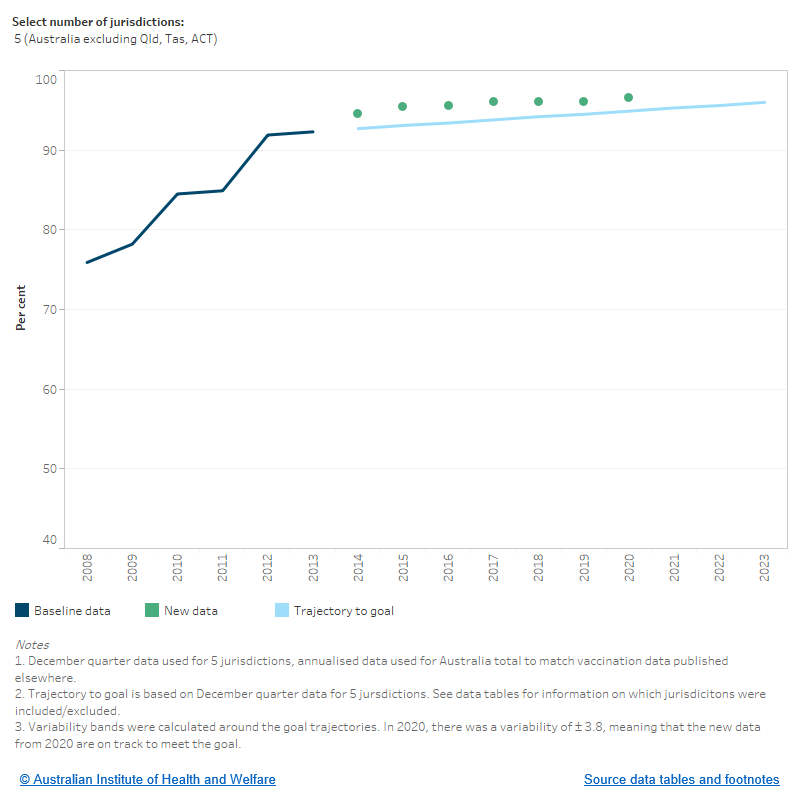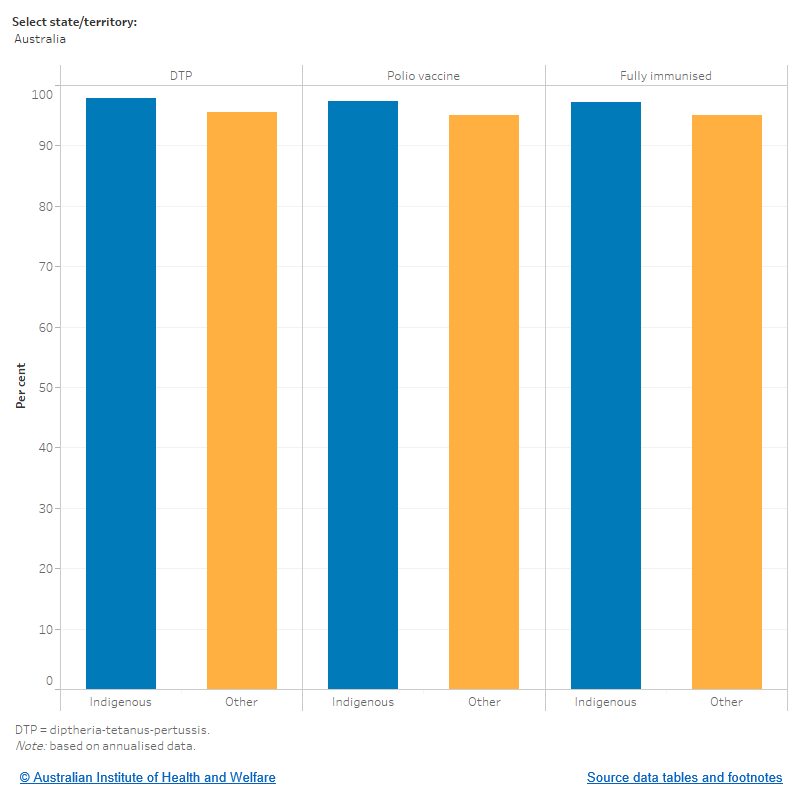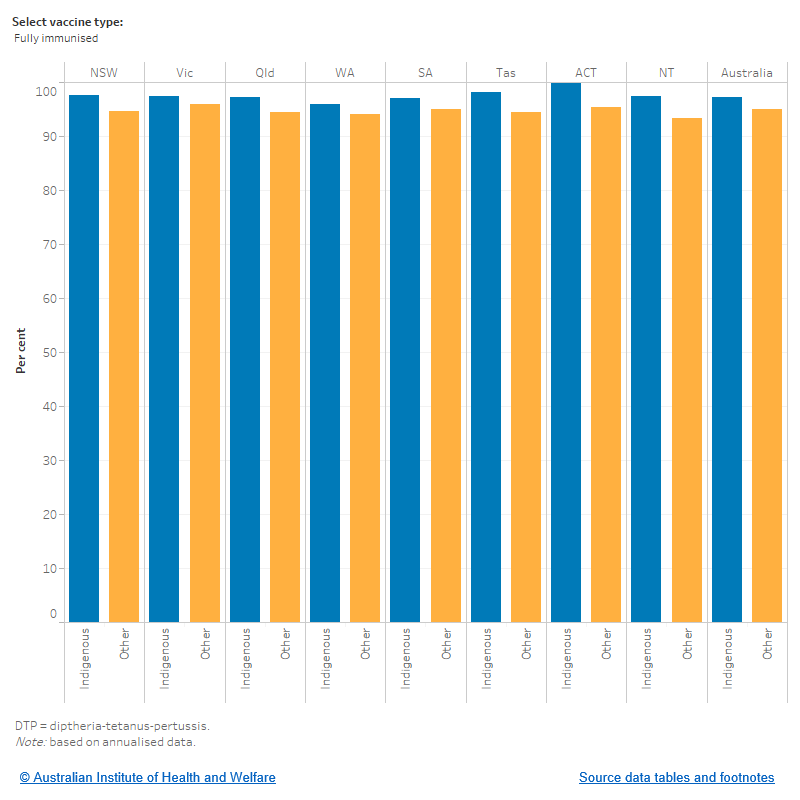Goal 7: Fully immunised – children aged 5
This indicator reports on the proportion of Aboriginal and Torres Strait Islander children aged 5 who are fully immunised. The goal for this indicator is 96% by 2023.
Why is it important?
Immunisation is important in protecting children from harmful infectious diseases. The National Immunisation Program Schedule sets out which vaccines should be provided at which ages, including for children aged 5.
What data are available?
Data for this indicator were sourced from the Australian Immunisation Register. The reported data for this indicator are for children aged 60 to <63 months as at 30 September. December quarter data from 5 jurisdictions – New South Wales, Victoria, Western Australia, South Australia and the Northern Territory – were used to inform goal setting due to data availability when the goals were set. Annualised national data were available from 2008 and are also presented. Data for this indicator were sourced from the Australian Immunisation Register. The reported data for this indicator are for children aged 60 to <63 months as at 30 September. Data from 5 jurisdictions – New South Wales, Victoria, Western Australia, South Australia and the Northern Territory – were used to inform goal setting due to data availability when the goals were set. National data were available from 2008 and are also presented.
What do the data show?
Progress towards the goal is on track.
- In the 5 jurisdictions combined, the rate of children aged 5 who were fully immunised at 31 December 2020 was 97%, which was above the trajectory point of 95% to meet the goal.
In the combined 5 jurisdictions, as at 31 December in each year:
- The coverage rates for Indigenous Australian children aged 5 increased over time from 76% in 2008 to 97% in 2020.
- The coverage rates in each of the 7 years from 2014 to 2020 were above the trajectory required to meet the goal of 96% by 2023.
- Additionally, the rates from 2017 to 2020 were above the goal of 96% for 2023. Thus, if this level of coverage is maintained, the goal will be met.
National data are available from 2008. Nationally, in 2020, based on annualised data (to match immunisation data published elsewhere):
- 97% of Indigenous children aged 5 were fully immunised, compared with 95% of other children.
- Vaccine coverage rates among Indigenous children aged 5 ranged from 100% in the Australian Capital Territory to 96% in Western Australia.
Figure 7.1: Proportion of Aboriginal and Torres Strait Islander children aged 5 who are fully immunised
This figure shows the baseline data, from 2008 to 2013, the trajectory towards the goal, from 2014 to 2023. New data from 2014 to 2020 for the proportion of Indigenous children aged 5 who were fully immunised, based on 5 jurisdictions. New data has consistently exceeded the trajectory to the goal. Most recent data from 2020 show that 97.3% of Indigenous children aged 5 were fully immunised, above the 2023 target of 96.0%.

Figure 7.2: Proportion of children aged 5 who are immunised, by state/territory, vaccine type and Indigenous status, 2020 (annualised)
This figure shows that across Australia, the proportion of children aged 5 who are immunised was similar across Indigenous and other children. 97.8% of Indigenous children aged 5 were vaccinated for DTP, and 97.3% for Polio. This is above the rates for other children aged 5, 95.6% of whom were vaccinated for DTP and 95.1% for Polio.

Figure 7.3: Proportion of children aged 5 who are immunised, by vaccine type, state/territory and Indigenous status, 2020 (annualised)
This figure shows that across the jurisdictions of Australia, the proportion of Indigenous children aged 5 who were fully immunised was highest in the Australian Capital Territory (100%). The rate of full immunisation was higher among Indigenous children aged 5 across all jurisdictions.



